Oppenheimer-Snyder Model of Gravitational Collapse: Mathematical Details
In a previous article, I described in general terms the model of gravitational collapse of a spherically symmetric massive object, first published by Oppenheimer and Snyder in their classic 1939 paper. In this follow-up article, I will give further mathematical details about the model, using an approach somewhat different from their original paper (and inspired by the approach described in MTW and Landau & Lifschitz).
(Note: Weinberg takes a different approach in the vacuum region outside the collapsing matter. Instead of finding an expression for the exterior vacuum metric in comoving coordinates, he finds an expression for the interior metric in coordinates similar to standard Schwarzschild coordinates. We will not discuss that approach here, but it is instructive to compare the two. The latter approach, which also has similarities to the approach taken in the original Oppenheimer-Snyder paper, has the obvious limitation of having a coordinate singularity at the horizon, as well as other more technical issues; but since those sources are focused mainly on how the collapse appears to a distant observer, those limitations are less of an issue than they would be for us here since we want a description that covers the entire collapse and includes both distant observers and the collapsing matter all the way down to the singularity. The comoving coordinate approach we use here is much better suited for that.)
We’ll start with the spacelike hypersurface that we labeled with ##\tau = 0## in the previous article, i.e., on which the collapsing object is momentarily at rest. As we noted, this hypersurface has the geometry of a 3-sphere out to some finite areal radius that we will call ##R_b## (“b” for “boundary” since this is the boundary of the matter region), and a Flamm paraboloid outside this radius. We can express this as follows: the 3-metric of this hypersurface is given by
$$
d\Sigma^2 = \frac{dR^2}{1 – k R^2} + R^2 d\Omega^2
$$
for ##R \le R_b##, and by
$$
d\Sigma^2 = \frac{dR^2}{1 – \frac{2M}{R}} + R^2 d\Omega^2
$$
for ##R \ge R_b##. Here ##d\Omega^2## is the standard metric on a unit 2-sphere in terms of the angular coordinates, and ##M## is the total mass of the matter.
Since these two metrics must match at ##R = R_b##, we can obtain an equation for ##k##:
$$
k = \frac{2M}{R_b^3}
$$
which tells us that ##k## is related to the density of the matter at ##\tau = 0##. We will not be discussing density in this article so we won’t explore that aspect any further. This equation for ##k## contains ##2M##, so it allows us to rewrite the 3-metric above in the following useful form, valid for all values of ##R##:
$$
d\Sigma^2 = \frac{dR^2}{1 – 2M \frac{R_-^2}{R_b^2} \frac{1}{R_+}} + R^2 d\Omega^2
$$
where we have defined the functions ##R_- = \min(R, R_b)## and ##R_+ = \max(R_b, R)##. We can think of ##R_-## as capturing radial variation inside the matter only, and ##R_+## as capturing radial variation outside the matter only.
Our strategy is to use the coordinate ##R## on the ##\tau = 0## hypersurface to label the geodesics both inside and outside the collapsing matter. This approach matches standard FLRW coordinates for a closed universe inside the matter and is somewhat similar to Novikov coordinates outside the matter; however, we will need to look carefully at the latter case to ensure that we are correctly describing the vacuum region since standard Novikov coordinates do not use the areal radius on the ##\tau = 0## hypersurface directly, but define a new radial coordinate, called ##R^*## in MTW, and express the metric in terms of this coordinate. We will return to this below.
We now make use of the fact that the geodesic motion both inside and outside the matter can be described using a cycloidal time parameter ##\eta##, which ranges from ##0## at ##\tau = 0## to ##\pi## at the instant when each geodesic hits the singularity at ##r = 0##. We note that inside the collapsing matter, the instant ##\eta = \pi## corresponds to the same ##\tau## everywhere; this follows from the standard FRW metric. However, outside the matter, it turns out that the instant ##\eta = \pi## corresponds to a value of ##\tau## that increases with ##R##. We can express all this in the following pair of equations:
$$
r(\eta, R) = \frac{1}{2} R \left( 1 + \cos \eta \right)
$$
$$
\tau(\eta, R) = \frac{1}{2} \sqrt{\frac{R_+^3}{2M}} \left( \eta + \sin \eta \right)
$$
We won’t prove these in detail here, but looking at the referenced sections in MTW and Landau & Lifschitz should make it clear where they come from. Note the ##R_+## in the second formula; this is what captures the fact that the relationship between ##\tau## and ##\eta## is constant inside the matter, but varies with ##R## outside the matter. Note also that the first formula is the same for all values of ##R##, i.e., both inside and outside the matter. In other words, we have boiled down the differences inside and outside the matter to just two things: the ##dR^2## term in the 3-metric above, and the relationship between ##\tau## and ##\eta##. These are the only places where radial variation changes at ##R_b##.
All of this suggests that we should be able to write the full metric in our chosen coordinates in the form:
$$
ds^2 = – d\tau^2 + A^2 \left( \eta \right) d \Sigma^2
$$
where ##A \left( \eta \right) = \left( 1 + \cos \eta \right) / 2##. Note that, while ##A## is a function of ##\eta## only, ##\eta## is not a coordinate, and if we use the above equation for ##\tau## as a function of ##\eta## and ##R## to implicitly define ##\eta## as a function of ##\tau## and ##R##, we will find that ##A## will then be a function of ##\tau## and ##R##. More precisely, ##A## will be a function of ##\tau## and ##R## for ##R > R_b##, i.e., outside the collapsing matter; but inside the collapsing matter, ##A## will be a function of ##\tau## only (which is what we expect from the standard FRW metric). This change in dependence at ##R_b## is the price we pay for having the proper time ##\tau## of comoving observers as our time coordinate.
(We could rewrite the metric to use ##\eta## as the time coordinate, but if we did, while we would get a cleaner separation of time and radial dependence in the spatial part, we would then pay a different price: the metric would no longer be diagonal. This is a consequence of the fact that, while surfaces of constant ##\tau## are orthogonal to our comoving worldlines (the radial geodesics), surfaces of constant ##\eta## are not–more precisely, they are not in the vacuum region outside the collapsing matter. We won’t pursue this further here, but it promises to be instructive if any reader wants to tackle it.)
We will leave those matters as an exercise for the reader and return to our ansatz for the metric above. For the region inside the collapsing matter, we already know that it is correct, because, as above, we know that ##A## is a function of ##\tau## only and we know that ##d \Sigma^2## in this region has the standard FRW form. So all we need to verify is that our ansatz is correct for the vacuum region outside the collapsing matter. We will do that by rewriting the usual form of the metric in Novikov coordinates in terms of ##R## instead of ##R^*##.
The metric in the usual Novikov coordinates, using ##R^*##, is:
$$
ds^2 = – d\tau^2 + \frac{{R^*}^2 + 1}{{R^*}^2} \left( \frac{\partial r}{\partial R^*} \right)^2 d{R^*}^2 + r^2 d\Omega^2
$$
where
$$
R^* = \sqrt{ \frac{R}{2M} – 1 }
$$
We now note the following:
$$
\frac{\partial r}{\partial R^*} dR^* = \frac{\partial r}{\partial R} \frac{\partial R}{\partial R^*} dR^* = \frac{\partial r}{\partial R} dR
$$
$$
\frac{\partial r}{\partial R} = \frac{r}{R}
$$
If you’re unsatisfied with the casual use of the chain rule in the first of these, you can verify it by explicit computation from the above equation for ##R^*## in terms of ##R##, as is done in this PF thread. The second is obvious from the above equation for ##r## in terms of ##R##.
Using these and the fact that ##r^2 = R^2 \left( r / R \right)^2##, we can rewrite the metric for the vacuum region in the form we want:
$$
ds^2 = – d\tau^2 + \left( \frac{r}{R} \right)^2 \left( \frac{1}{1 – \frac{2M}{R}} dR^2 + R^2 d\Omega^2 \right)
$$
Here ##r / R## is the same as the function ##A \left( \eta \right)## that we defined above, as can be seen from the equation for ##r## in terms of ##\eta## that we gave above, and the factor inside the parentheses in the spatial part is ##d \Sigma^2## that we saw above for the region ##R > R_b##. So, putting everything together, we have our metric for the entire Oppenheimer-Snyder collapse, including both the interior of the collapsing matter and the exterior vacuum region, in comoving coordinates:
$$
ds^2 = – d\tau^2 + A^2 \left( \eta \right) \left( \frac{dR^2}{1 – 2M \frac{R_-^2}{R_b^2} \frac{1}{R_+}} + R^2 d\Omega^2 \right)
$$
In a follow-up article, we will look at what this metric tells us about the physics involved.
References:
Landau & Lifschitz (Fourth Edition), Volume 2, Sections 102, 103
Misner, Thorne & Wheeler (1973), Sections 31.4, 32.4
Weinberg, Gravitation & Cosmology (1972), Section 11.9
- Completed Educational Background: MIT Master’s
- Favorite Area of Science: Relativity


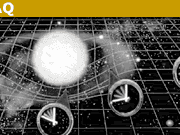
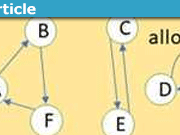
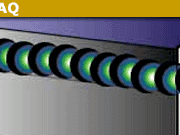
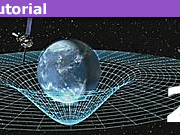

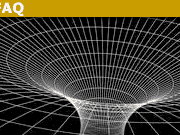


Leave a Reply
Want to join the discussion?Feel free to contribute!